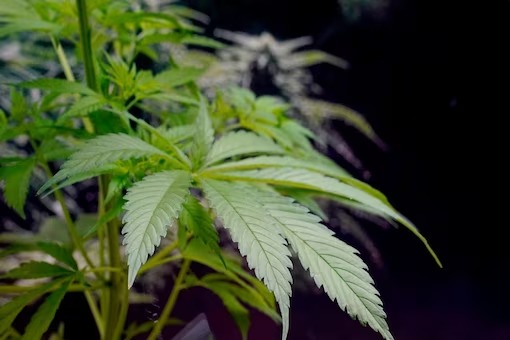Views|”Sheelavathi” Is Taking India By Storm
The 2010 Bollywood film “Tees Maar Khan” included the hit Hindi song “Sheila Ki Jawani,” which went viral and has amassed over 200 million views to date. In ten more years, a new Sheila has emerged to become the talk of the town at parties, get-togethers, and on campuses. This “Sheila” is really referred to as “Sheelavathi,” a cannabis strain that rivals well-known, globally recognized Indian companies like Kerala’s Idukki Gold and Himachal Pradesh’s Malana Cream.

Tetrahydrocannabinol is the primary psychoactive component of all cannabis plants, which are made up of chemical compounds called cannabinoids. Sheelavathi differs from other cannabis strains in that it has a distinct combination of terpenes and fragrant chemicals. This cannabis strain has taken the moniker “Sheelavathi,” which belonged to a tribal goddess.
Three types of cannabis are grown covertly in the vast mountainous and wooded areas of the Vizag Agency region, now known as the Andhra-Odisha Border (AOB) and formerly known as the Vizagapatam Hill Tracts Agency under British rule: Raja Hamsa, Kala Pathri, and Sheelavathi. In India, the strain known as “Sheelavathi” has become quite popular.
Around 11 Mandals in the densely wooded Eastern Ghats have been recognized by vendors from Kerala and Tamil Nadu as being perfect for growing the Sheelavathi type of cannabis. The area’s traditional crops, such ginger and turmeric, have been replaced since the favorable climate guaranteed the tribal inhabitants exceptionally high returns with little work when compared to other crops.
In addition, the Sheelavathi variety of cannabis is grown in around 23 districts of Odisha. Consequently, the production of cannabis or ganja today occupies more than 10,000 acres of land. In addition to the indigenous tribes, the Maoists may also have financial influence over their illicit actions, according to police suspicions. The price that is given to the tribal farmer is around Rs 2,000 per kilogram, and in Bengaluru and Hyderabad’s metro areas, it might go up to Rs 10,000. According to excise and state police officers, the annual total worth of the transaction should be over Rs 10,000 crore. The data from the seizure of Sheelavathi, which amounts for more than 70% of the 23 lakh kg of ganja the NCB has seized nationally in recent years, supports this. In the meantime, Visakhapatnam has come to be recognized as the cannabis brand Sheelavathi’s entry point. Additionally, this has resulted in the establishment of a broad network of vendors, merchants, salespeople, and customers, particularly among the student body.
Sheelavathi’s tremendous popularity has been partly attributed to its affordability. Malana Cream is expensive, costing anywhere from Rs 5 to Rs 8 lakh per kilogram, yet Sheelavathi is now available for as little as Rs 80,000 to Rs 1.5 lakh per kilogram. Sheelavathi’s success may also be attributed to the fact that, as a result of consistent and strict enforcement, there is limited availability of both Malana Cream and Idukki Gold on the market, keeping them exclusive to their respective regions.
In India, using isolated forest areas for cannabis cultivation has become a widespread issue. There is a covert plan to cultivate cannabis as a simple way to get wealthy quickly, leading to the widespread invasion of forest areas in the Northeast, the Southern states, Kashmir, and Chhattisgarh. The expansion of forested areas is occurring at a very quick speed under the cover of plantations, residential areas, and vacation destinations. Political and religious reasons prevent the underlying problem of cannabis production in secret from being adequately addressed, apart from the fact that it might cause conflict between humans and animals.
Human intrusions into Reserved Forests (RFs) and Protected Forests (PFs) are on the increase due to the possibility of generating fast money by growing cannabis and opium.
For instance, information made public on May 16, 2023 by the Superintendent of Police of the Narcotics and Affairs of Border (NAB), Manipur, shows that during the fiscal years 2017–18 and 2022–2023 poppy farms totaling 15,496.8 acres were found. 2,518 persons were detained under the Narcotic Drugs and Psychotropic Substances Act of 1985 during this time. Between 2017 and March 2023, 18,664.5 acres of poppies and 20 acres of cannabis plants, respectively, were eliminated.
The issue is that the fight against drugs and forest encroachment has grown deeply entwined with politics and religion in every Indian state, making matters very complex. Any campaign to combat the growing of illegal drugs is seen as witch-hunting certain communities and religious groups.
Furthermore, heavy fertilizer use is necessary in cannabis growing to discourage animal browsing. It leads to the release of harmful substances into the air, water, and soil, including agrochemicals and organic pollutants that harm aquatic life. Aquatic habitats are at risk because to the high water extraction rates from streams used for cannabis irrigation, which has an impact on both terrestrial and aquatic biodiversity. During the growth season, which lasts for 150 days on average, cannabis plants consume 22.7 liters per plant per day on average. There is very little information on water usage in cannabis growth in the available literature, and the sources of this data—both published and unpublished—vary widely. The management of forest landscapes has become a difficult task, and the entry of novel strains like Sheelavathi onto the market serves as a sobering reminder that the war on drugs is an ongoing and difficult one.







